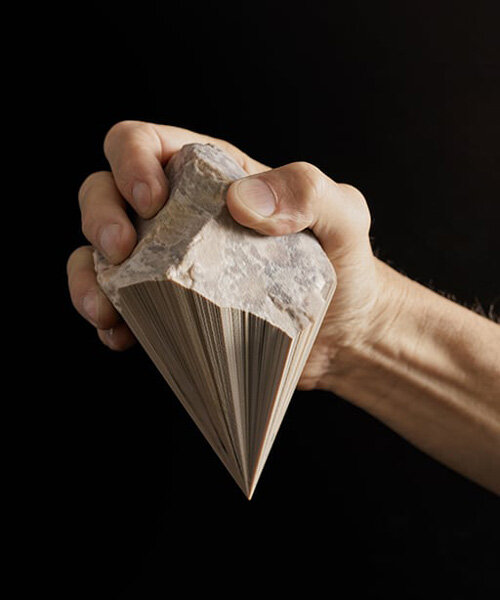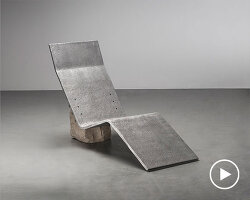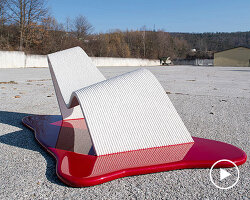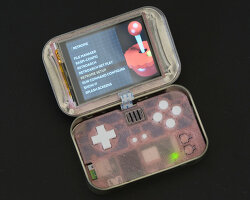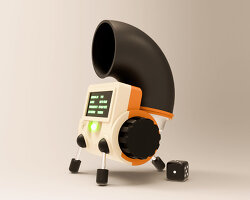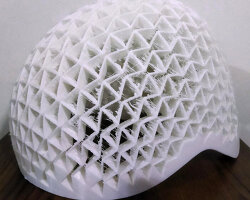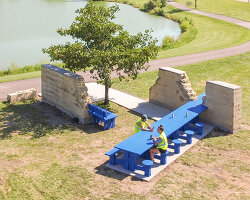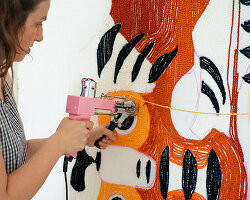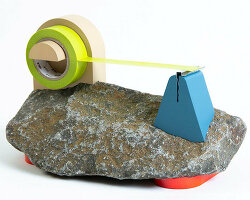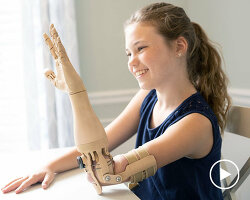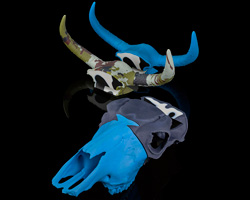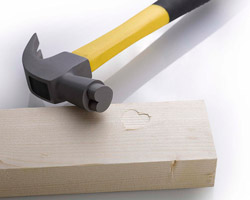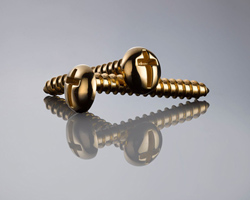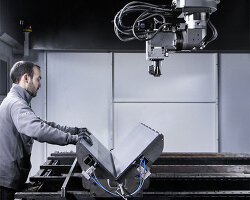fusing computational archaeology with design
Continuing his decade-long exploration of prehistoric stone tools through design, Dov Ganchrow unveils ‘To Computational Archaeology and Back’. The series emerges at the conflux of the fields of computational archaeology and of design, mapping the evolution and journey of historic natural forms into steel, nylon, and zirconia models.
To begin with, using basalt hammerstones and antler as percussion implements, prehistoric-like hand-axe forms were knapped from flint nodules collected in the Negev desert. They were 3D-scanned, processed, and worked while in their malleable digital material state. Later they were rebirthed into the physical world using various contemporary fabrication technologies and materials to, pairing the 3D-printed models with their selves.

Dov Ganchrow unveils ‘To Computational Archaeology and Back’ | all images by Dan Perez
dov ganchrow digitizes prehistoric artifacts
Throughout the process, different digitized artifacts took different routes before becoming materialized: including the shaping of a nodule into a sharp tool, work-scar analysis resulting in a series of knives, algorithmic calculation of a mean hand-axe form from an imaginary hand-axe data set, and the reduction of a polygon mesh while retaining a functional tool shape. Product designer Dov Ganchrow pairs the final 3D-printed nylon and zirconia objects with their lithic-technology previous selves, to allow for a glimpse at the journey travelled through materiality and technological insights, thus expressing our own species evolution.

the 3D scan of a piece of raw flint was mathematically reduced while in its digital state, to form a point
Dov Ganchrow notes: ‘The fields of Design and Archaeology both have a keen understanding of culture as viewed through a material and technological prism. Designing the world around us, just as picking apart a past world, requires the use of tools — often tools developed especially for the task at hand.’
‘The computational archaeology lab at the Hebrew University in Jerusalem have created digital analytical tools to study prehistoric stone artifacts. These contemporary tools consisting of software, scans, and algorithms, are in essence digital artifacts, worthy of study in their own right. At a time when data is viewed as a ‘new material’, one that can be stored, compressed, collected, and mined, digital tools are snapshots of our technological capabilities and cultural interests.’

several bronze chopping artifacts were fed to an algorithm that then produced the ‘average’ tool form

colors on the polyjet 3D print represent degree of deviation in form between the input artifacts
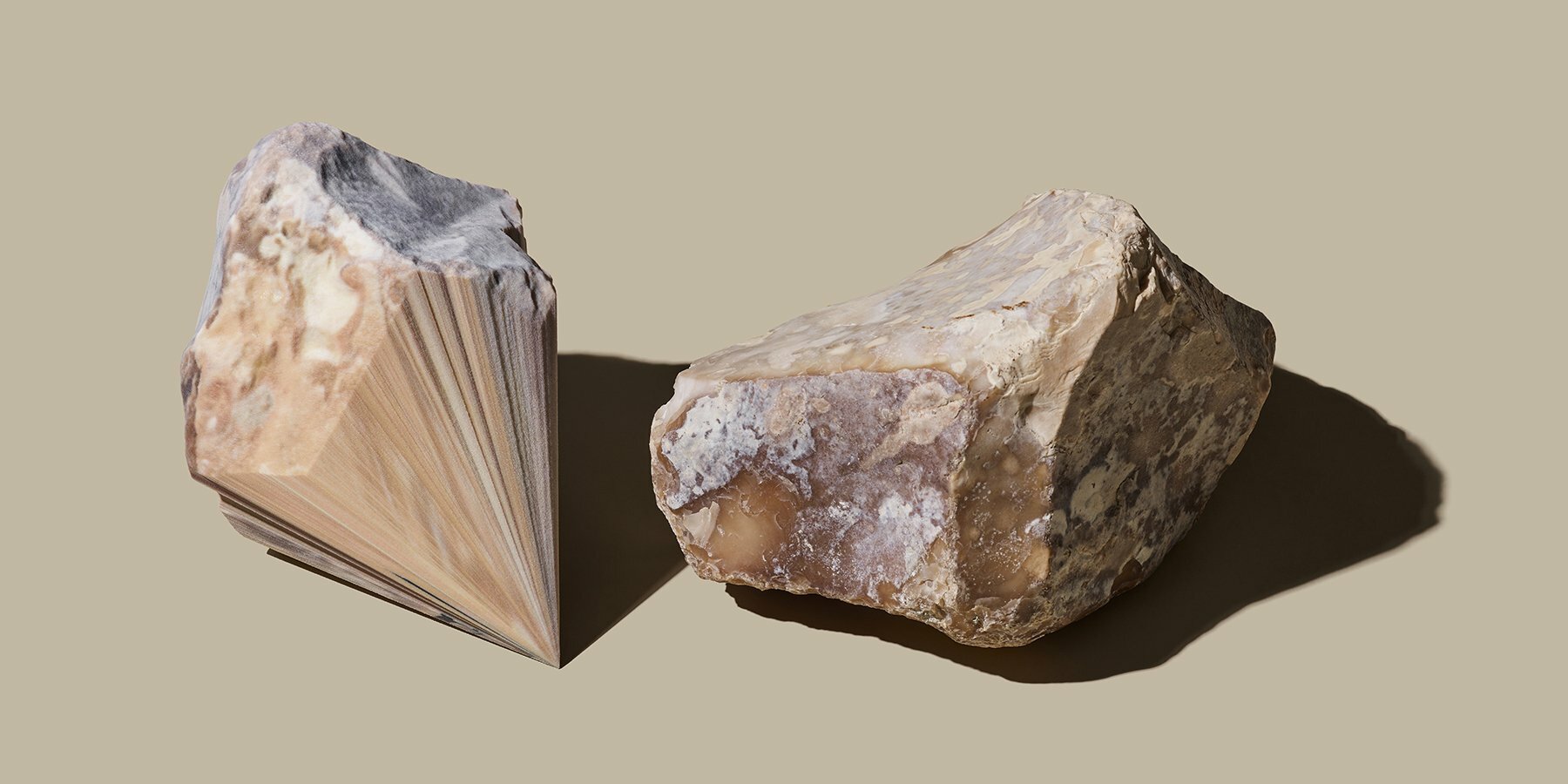

using a knapping-scar analysis software, a series of knives were created

despite having this stone tools form reduced from 500,000 polygons to just 48, 24, and 12, its function remains in tact

using a tool to make a tool: the 3D scan of a flint hand-axe was used to “remove” material from an imaginary digital color “stone”, until this became a tool form. flint and full-color 3D polyjet print
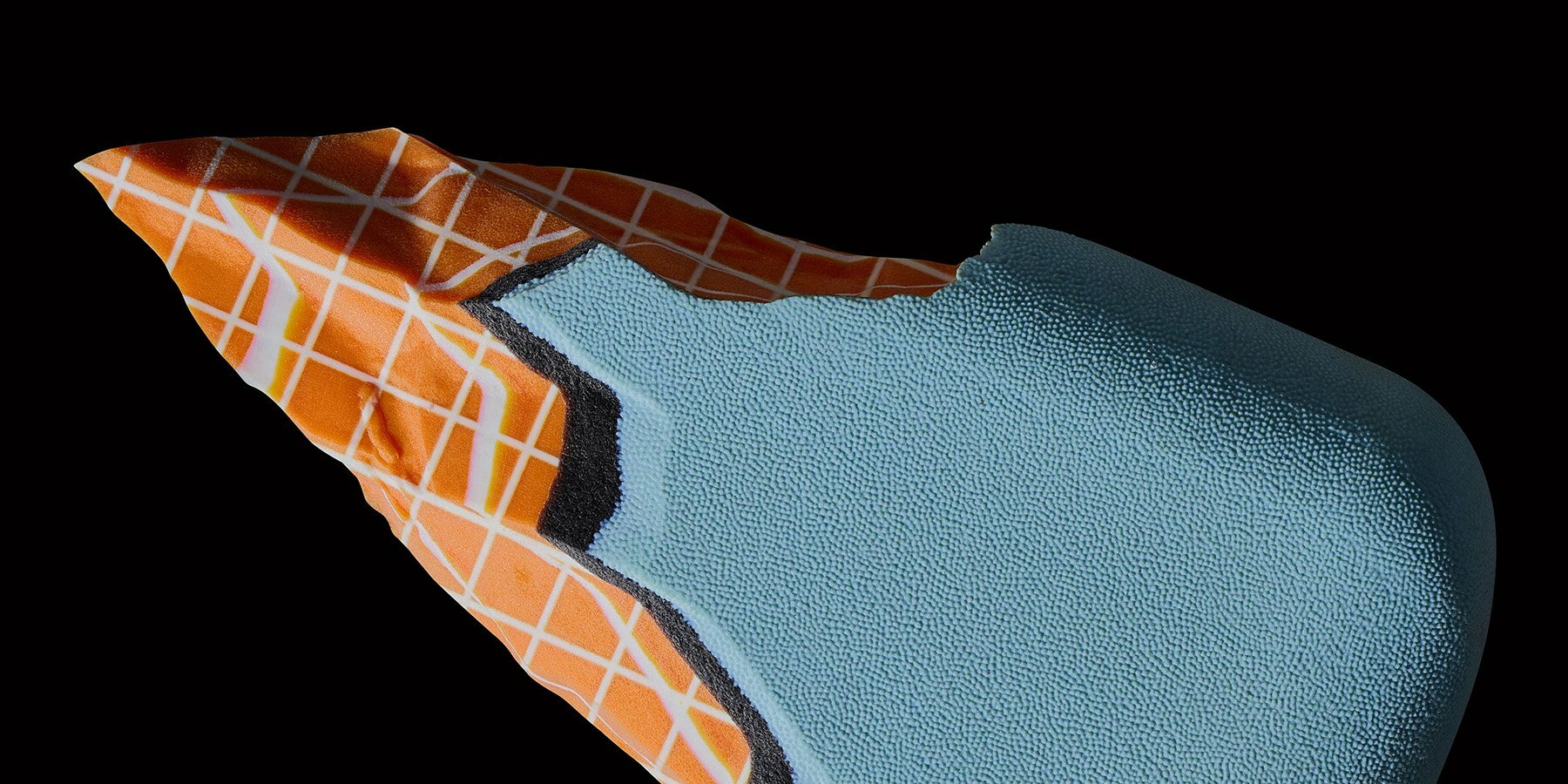
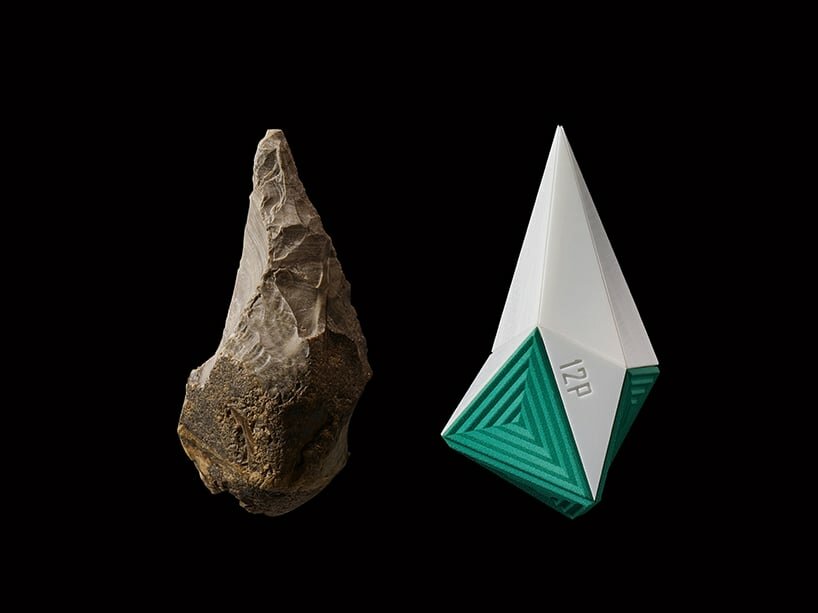
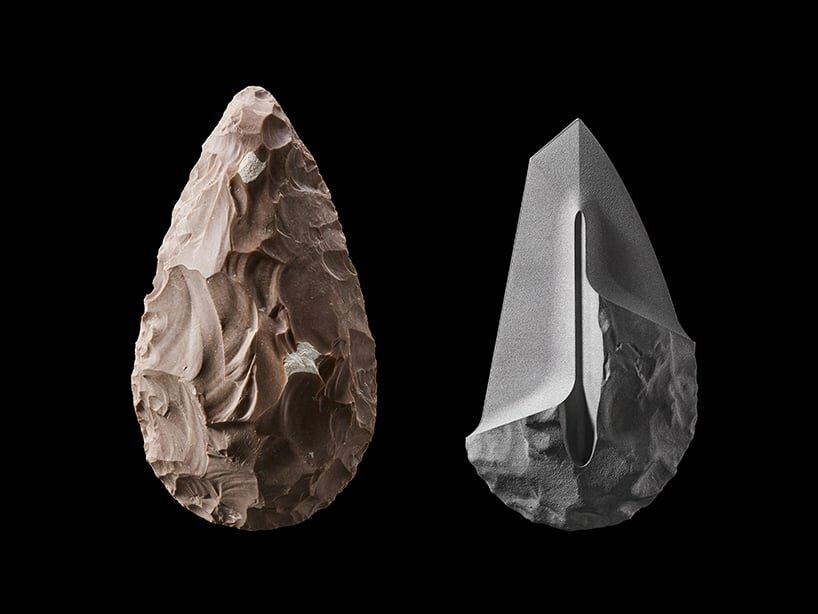
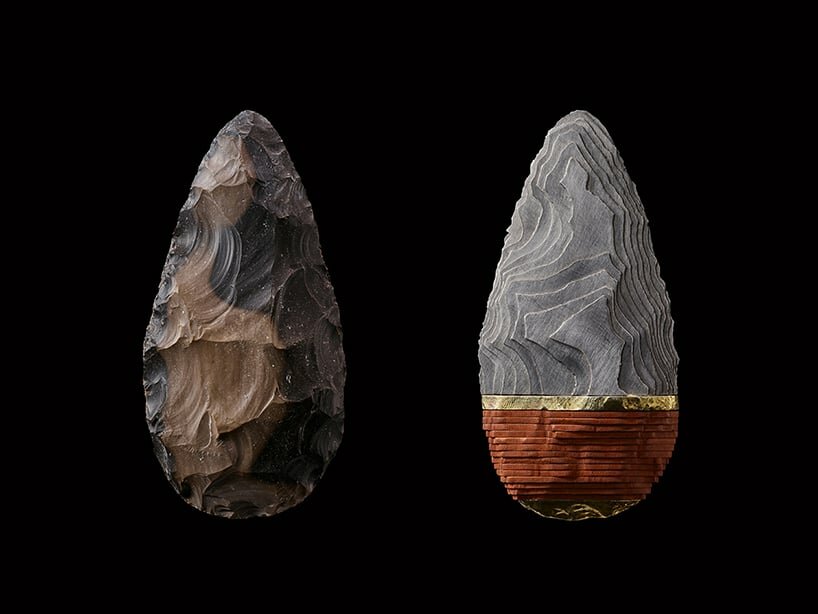
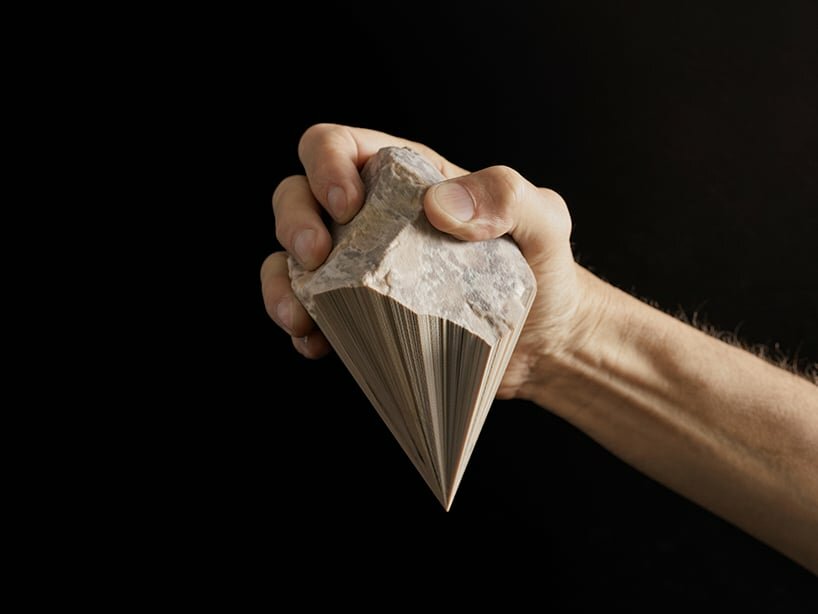
project info:
name: To Computational Archaeology and Back
designer: Dov Ganchrow
supported by: Mifal Hapais — The Israel Lottery Council for Culture and Arts; Prof. Leore Grosman and Dr. Gadi Herzlinger at the Computational Archaeology Lab in the Hebrew University’s Institute of Archaeology; The Hebrew University’s Center for NanoScience and NanoTechnology; The Industrial Design Department at the Bezalel Academy of Arts and Design, Jerusalem; Stratasys; XJET; Dror Revach; Curator Maya Vinitsky, the Tel-Aviv Museum of Art
designboom has received this project from our DIY submissions feature, where we welcome our readers to submit their own work for publication. see more project submissions from our readers here.
edited by: ravail khan | designboom
